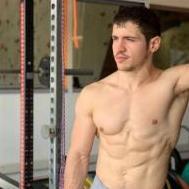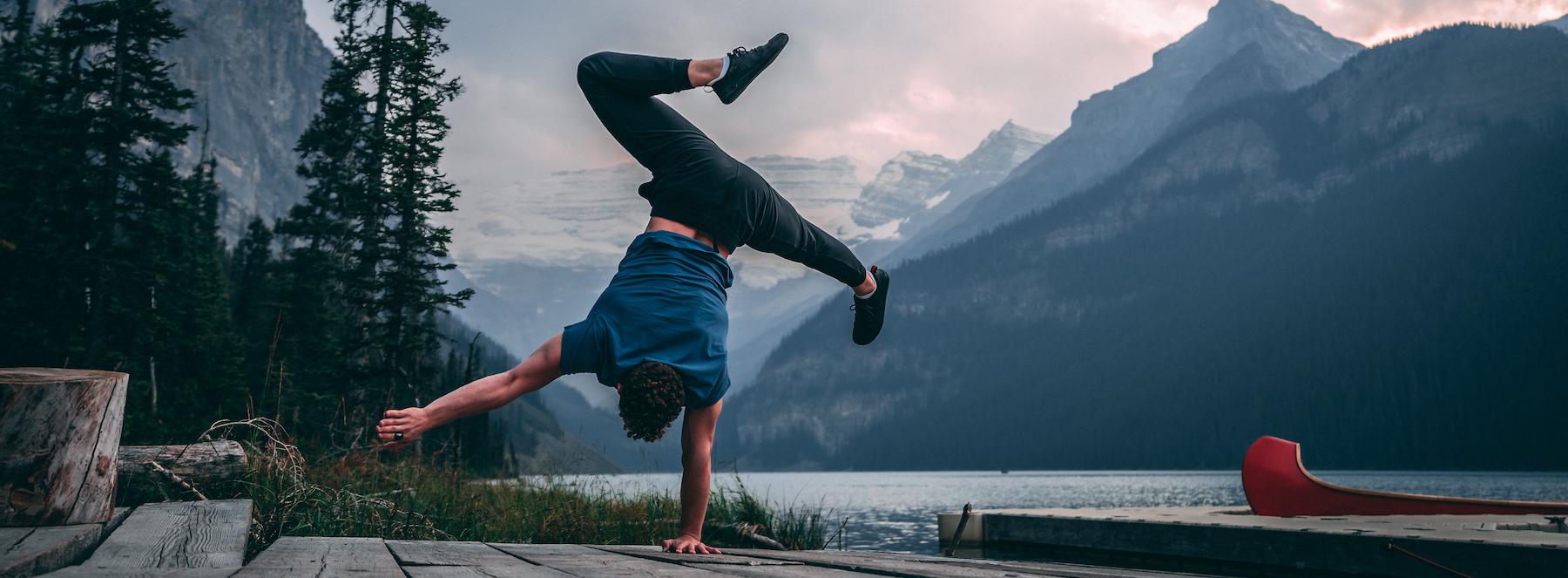All Activity
- Last week
-
 Marcus Lentz joined the community
Marcus Lentz joined the community -
 Ryan walker 422333 joined the community
Ryan walker 422333 joined the community - Earlier
-
 Callum Owen joined the community
Callum Owen joined the community -
 Zane Hayden joined the community
Zane Hayden joined the community -
 Ujjal Ghosh joined the community
Ujjal Ghosh joined the community -
 Chrysanthi Stylianopoulou joined the community
Chrysanthi Stylianopoulou joined the community -
 Neumann Marlett joined the community
Neumann Marlett joined the community -
 Mary 425811 joined the community
Mary 425811 joined the community -
 Michael Baker 40914 joined the community
Michael Baker 40914 joined the community -
Alrighty, thanks!
-
 Ronda Gorsica joined the community
Ronda Gorsica joined the community -
Hey Riley....well.. Each exercise starts with steps 1-9. Is this progression meant to be weeks, for example week 1 is step 1, week 2 is step 2, etc. Starting out the first step is very easy for me, should I be adjusting this to do a different step that is challenging? I usually suggest to use the forum to post a form check and then if they are ok you can test the last set of 9 BUT it is more important to have a good execution in orer to avoid bad habits. I see you can edit each exercise from A1 to A2, A1 for example is extremely easy for me, should I be adjusting to something that is more challenging like A6? same answer as above. form check first is suggested. When you edit the exercises there are four levels to chose from, each progressively harder, should I be selecting a level that is challenging and editing this or should I stay at level 1 for a while? same answer as above, if form is ok and you are strong enough you can use a "test approach of the step 9 and move on if necessary" Are all the strength portions part of the foundation series or does this track also progress to something else and when would this happen? the platform moves along the foundations 1 to 4.
-
Unfortunately no.
-
Oh sorry, I mean when I don’t have internet service. Is there offline options? Downloading?
-
Hello, I’ve just started the intermediate One Course as part of the paid premium membership. I have a few questions on the programming and how I should use the plan to progress. Each exercise starts with steps 1-9. Is this progression meant to be weeks, for example week 1 is step 1, week 2 is step 2, etc. Starting out the first step is very easy for me, should I be adjusting this to do a different step that is challenging? I see you can edit each exercise from A1 to A2, A1 for example is extremely easy for me, should I be adjusting to something that is more challenging like A6? When you edit the exercises there are four levels to chose from, each progressively harder, should I be selecting a level that is challenging and editing this or should I stay at level 1 for a while? Are all the strength portions part of the foundation series or does this track also progress to something else and when would this happen? Thanks! Riley
-
Hi Levi sorry but i do not understand your question.
-
Hi, what are my options for when I’m out of service?
-
Probably Yes but i'm not sure where to find it.. btw: movement --< approach when you want (at least mov 1) handstand --> begin as sson as possible rings --> wait until completion of foundations 2
-
Once upon a time I thought in the website there was a road map of when to add in Handstand work, Ring work, movement, ect. Does this exist still?
-

Beginner adding handstand and movement to my programing
Matthew Walker replied to CAMERON 227810's topic in Getting Started
@CAMERON 227810 Go to the Build your own workout tab. You can add it there. -

Beginner adding handstand and movement to my programing
Alessandro Mainente replied to CAMERON 227810's topic in Getting Started
HI Cameron , with the guided plan you have basically the foundations work plus stretch. But you cannot insert manually the handstand. -

Beginner adding handstand and movement to my programing
CAMERON 227810 posted a topic in Getting Started
I followed this program about 7 years ago and wish now that I would have stuck with it. previously I had handstand and movement in my programing. I cant figure out how to add these too into my daily programming with the guided program. or even see anywhere there is handstand or movement progression. I can see both in the course library but thats it. where do I find these to progressions so I can incorporate these into my programing? -
Welcome back!!!
-
With so many fitness videos and fat loss "programs" out there promising for rapid fat loss, somehow, I find myself always circling back to Gymnasticbodies. I cannot ignore the precise and exceptional details of the steady state progressions in obtaining a fit and healthy body. I'm 52, and I'm back on the journey for better mobility, flexibility and strength. Gymfit, it's been awhile, but I'm back.
-
Ok thank you
-
The once-per-week strcture fro a movement is the most doable for the biggest part of the population. in some cases twice a week for a movement can be an option but it should be evaluated separately from case to case. Th platform does everything for you.
-
Ok sounds great. You think I need how long per workout and how many workout weekly
-
gymnasticbodies platform (gymfit) gives a starting test where you insert your performance and you can understand what it is your level. i personaly think that thisi si the most avanced platform on the web at the moment. Been able to program by yourself requires even an higher level of knowledge.
-
Hello Alessandro, thanks for your answer. But i don't understand how do i do with the program. Basically i'm not very flexxible, my max for proper dips (getting totally down are 10 maybe) for pull up (6) and pushup 30. how do i know which level. And a gymnastic workout take how long usually?
-

Calisthenics Gymnastics beginner.
CHERIF Djalloul replied to CHERIF Djalloul's topic in Getting Started
grazie mille -
HI Cherif, i personally think after almon 20 years of coaching that grese to the groove it is ok for technical movemtn like handstand where the more you practice it (at some stage of development) the better it is BUT for strenght training it is a suboptimal source of improvement. a stable program with a basic progression that increase the difficulties of the session week over week (also depends on your current level) it is better. The fact that you got an injury easrly in your process reflects the fact that your joint are not enough prepared, they need to adapt BUT grease to the groove do not let them top recover due to the high frequency.
-

Calisthenics Gymnastics beginner.
Alessandro Mainente replied to CHERIF Djalloul's topic in Getting Started
Welcome aboard! -
Hi everybody. I started calisthenics on september but injured in my small finger 2 month later with an educative exercise to master muscle up. Actually i'm getting back on track after 3 month of breakdown i wazs focusing on cardio instead. i want to get stronger at pull ups and i work a lot (i'm a taxi driver) so i basically my idea is to work with grease the groove , every time i stop between to rides, i have my rings, and go for a short set of reps. I want to know if i can mix differents exercises with grease the groove (for example my max is 7 pull ups, i do 3 pull ups, 3 chin ups, 8-10 dips(my max is 20+), 10 body weight squats, and Hanging with rings i'm beginner actually). Do you thinks i can do that, i'm doing it every 30 min or plus, using the grease the groove method, or i have to do one exercise only while greasing the groove? My goal is to optimize maximum because i'm working a lot(10+ driving daily + side project on my laptop, so working and breaking sometimes to grease the groove and add at the end of the day of work some Z2 cardio or sometimes when i stop driving go for a fast walk). I precise that i don't feel tired and i listen to my body. Any advice to optimize my routine, and for flexibility if you have any advices ?
-
Hello everybody, I'm 37 years old from Paris (France). and a beginner and want to get better at gymnastics-calisthenics , strength training globally. Found this website Today and glad to be with you.
-

Middle delts in Gymnasticbodies
Alessandro Mainente replied to Victor A MOUCLIER's topic in Strength
Hi Victor, i do not know when i've said this think probably not in 2020+. probably i would decrease this weigth oh the shoulder press down to half of the bw or something more. and probably i would add the isolated movement early in some program for some students. said that, the fact that 99% of people do the lateral raises wrongly is basically TRUE. i can go tomorrow (not in my gym...they are done pretty well) and touch traps of 10 people and feel them squeezed 100% in all the cases. Taking the work with the traps is a technical problem, nothing to do with basic strength of the deltoids. Said that there are 3 exercises that targets middle deltoids, i will talka bout 2, the last one it is something i've invented and i share it only with my clients: 1) side plank on the elbow.. lean a bit until the shoulder drops after the elbow and hold like if you want to do a lateral raises 2) handstand pushup with full range of motion and on the scapular plane.



